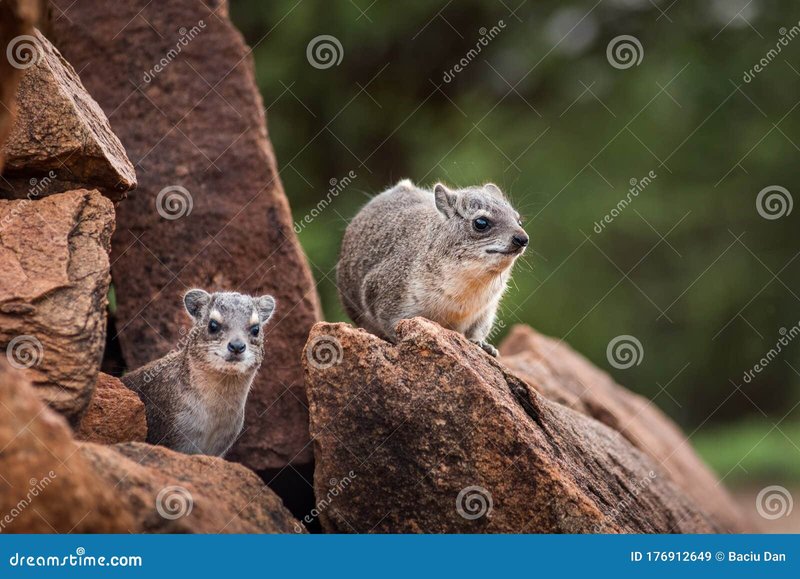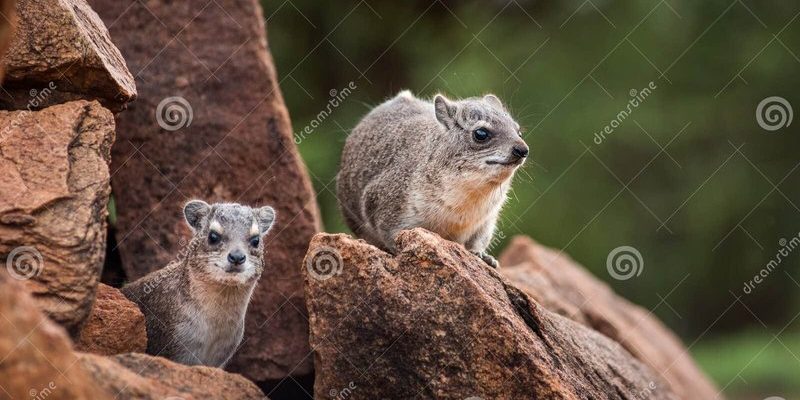
Rock hyraxes, also known as procaviids, are often mistaken for rodents due to their size and appearance. However, they’re actually more closely related to elephants and manatees! Imagine that for a second—a little creature that looks like a chunky guinea pig is actually a distant relative of the majestic elephant. In their rocky habitats, they have developed intricate social structures and nurturing practices that help ensure their young not only survive but thrive in the wild. Let’s dive into how rock hyraxes raise their young.
Rock Hyrax Social Structure
Understanding how rock hyraxes raise their young starts with their social structure. These animals live in groups called colonies, usually consisting of 10 to 80 individuals. Each colony has a distinct hierarchy, where one male, often called the dominant male, leads the group. You might be wondering how this affects parenting. Well, the social dynamics play a vital role in the survival of the pups.
Within these colonies, all adults contribute to the care of the young. This means that while a mother is responsible for her own pups, other females can also help with watching over them. Imagine a community of friends chipping in to babysit—you can almost hear the laughter! This cooperative behavior enhances the survival rate of the young, as there are more eyes to keep watch for potential predators.
Moreover, the presence of a dominant male ensures stability within the group. He helps protect the colony from outside threats while the females focus on nurturing and teaching the young. Isn’t it fascinating how teamwork makes such a difference in the animal kingdom?
Gestation and Birth
Rock hyraxes have a gestation period of about seven to eight months—that’s a decent wait for a little hyrax! When a female is ready to give birth, she often seeks out a safe spot within the colony’s rocky crevices, away from prying eyes and potential predators. This natural instinct to find a safe haven ensures that her young have the best chance of survival right from the start.
When pups are born, they’re relatively underdeveloped but are soon able to cling onto their mother for warmth and security. This is crucial in the wild, where temperatures can fluctuate dramatically. You’ll likely see that new moms are incredibly defensive of their pups, often staying close to them and watching for any signs of danger. Here’s the thing—caring for young pups is a full-time job, and mothers invest a lot of energy and attention into them.
Interestingly, rock hyraxes give birth to one or two pups at a time. This means less is more; raising a smaller number of young allows mothers to dedicate more resources and time to each one, helping them grow strong and healthy.
Nurturing and Feeding
Once the pups are born, their nurturing journey begins. Hyrax pups start nibbling on solid food after about two weeks, but they rely heavily on their mother’s milk for the first two months. Isn’t it cute to think about these adorable little creatures scurrying around, trying to imitate their mothers?
Mothers teach their young what to eat and where to find it. Rock hyraxes are herbivores, munching on leaves, grasses, and fruits. A mother’s guidance is crucial during this time because the environment can be harsh and unfamiliar. Young hyraxes watch their moms and learn through imitation. It’s like how we learn new skills by watching our parents or friends help us along the way.
Moreover, hyrax colonies are known for their vocalizations. Mothers often use sounds to communicate with their pups, alerting them to potential dangers or guiding them back to the safety of the group. This learning process is not rushed; it’s a gradual build-up of skills and knowledge that will serve them well as they grow older.
Learning and Social Skills
As pups grow, they begin to explore their environment more independently. This phase is vital for their development. Young hyraxes engage in play with their siblings and other pups in the colony, which may look like frolicking or chasing each other. Through these playful interactions, they learn essential social skills that will help them navigate life as adults.
You might be wondering why social skills are so important. Well, the relationships they build within their colony can greatly impact their success in finding mates and establishing their roles in the group as they grow older. The more they play and interact, the better they understand their place in the social structure. Plus, it keeps their spirits high!
Interestingly, mother hyraxes often encourage their pups to engage in social play. This isn’t just for fun; it’s also a way to strengthen familial bonds and ensure that the group remains cohesive. You can picture a bustling community where everyone looks out for one another—that’s the essence of a hyrax colony.
Protection from Predators
In the wild, danger lurks around every corner, and rock hyraxes must be vigilant. Their primary predators include birds of prey, snakes, and even larger mammals. It’s a tough world out there! Fortunately, their social structure provides significant safety in numbers. By living in colonies, they can increase their chances of survival.
When a threat is detected, the colony goes into high alert. Hyraxes use specific alarm calls to warn each other of approaching danger. Here’s where it gets interesting: pups learn these alarm calls early on. With their mother’s guidance, they quickly grasp the importance of recognizing different sounds and what they mean. It’s like learning the fire alarm signal at home, so you know when to stay safe!
Mothers also teach their young about escape routes and safe hiding spots. Many times, you’ll see a mother leading her pups to a sheltered area where they can remain concealed from predators. This hands-on training is essential, equipping them with the skills they need to survive in the wild once they begin to venture out on their own.
Transition to Independence
As pups grow older, they gradually gain independence. This process typically happens around six months of age. During this stage, they start to venture further from their mothers and experiment with foraging on their own. But it’s not an overnight change—there’s still a transition period where the mothers keep a close eye on their growing young.
You might find it heartwarming to know that even as they grow independent, young hyraxes often return to their mothers for reassurance and guidance. It’s a bit like young adults returning home for advice or support. This continued bond strengthens their relationship and gives the young hyraxes the confidence to explore their world.
Eventually, these young hyraxes will leave their family groups to find their own colonies. This natural part of their life cycle allows for genetic diversity and strengthens the overall population. It’s a bittersweet moment for mothers, seeing their young take flight—but it’s also a crucial step in their development.
Rock hyraxes raise their young in a fascinating blend of community support, instinctual behavior, and learned skills. From the moment of birth through their journey to independence, these small mammals demonstrate the power of teamwork and nurturing. It’s heartwarming to see how families come together in the wild to protect and teach the next generation.
Understanding how rock hyraxes raise their young helps us appreciate the delicate balance of nature. Each tiny pup growing into a strong adult is a testament to the incredible parenting skills of their mothers and the community dynamics within their colonies. So next time you see a rock hyrax perched on a rock, you might just think of the bustling little family drama unfolding behind the scenes—where every moment counts in the circle of life.

